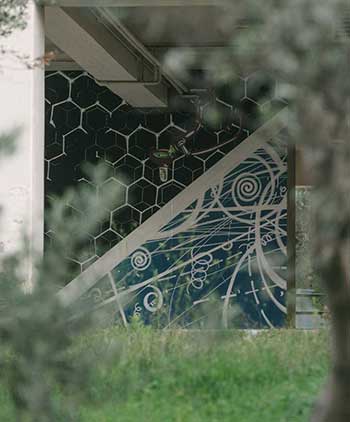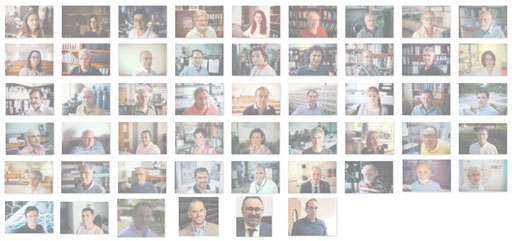- Τμήμα
Διοίκηση

- Προσωπικό
- Σπουδές
Σπουδές στο ΤΧΜ
Προπτυχιακά
Διπλωματικές Εργασίες
Μεταπτυχιακά
Διδακτορικό Δίπλωμα (PhD)
- Γενικές Πληροφορίες
- Νέες Αιτήσεις
- Κανονισμός
- Μαθήματα
- Προφορική Παρουσίαση
- Έρευνα
- Υποστήριξη Διατριβής
- Προηγούμενες Διατριβές
- Πρόγραμμα Εξετάσεων
Μεταπτυχιακό Πρόγραμμα (MSc)
Διατμηματικό ΠΜΣ (MSc)
- Φοιτητές
- Απόφοιτοι
- Έρευνα

Ερευνητική Δραστηριότητα στο ΤΧΜ
- Νέα & Εκδηλώσεις

Ανακοινώσεις
PhD Thesis Defence Presentations - Evangelia Siouti

Τίτλος Παρουσίασης (Presentation Title): Air quality forecasting in an urban area at high spatial resolution
Presentation Type (Τύπος Παρουσίασης): Υποστήριξη Διδακτορικής Διατριβής
Ονοματεπώνυμο Ομιλητή (Speakers Full Name): Ευαγγελία Σιούτη
Προέλευση Ομιλητή (Speakers Affiliation): University of Patras, Department of Chemical Engineering
Seminar Room (Αίθουσα): Βιβλιοθήκη "Αλκιβιάδης Χ. Παγιατάκης"
Ημερομηνία: Παρ, 02 Ιουν 2023,
Ώρα:
17:00 - 20:00
Διεύθυνση Διαδικτυακής Μετάδοσης: https://upatras-gr.zoom.us/j/93973410571?pwd=UGE2M0VwWm02SnF3NlBGaU1yVmJnQT09
Περίληψη (Abstract)
Air quality forecasting systems can contribute to the eventual improvement of atmospheric quality on regional or urban scales and to reduce the risk of people being exposed to high air pollutant levels. PM2.5 is one of the most important air pollutants that can penetrate deep into our lungs causing premature deaths, cardiovascular and respiratory problems, but also can damage ecosystems. Gas-phase pollutants such as O3 and NOx have also a negative effect on human health causing lung diseases. Air pollution forecasting systems are becoming an increasingly useful tool, as they can predict the future status of the atmosphere and potentially prevent human health risks.
The air quality forecasting system that we have developed called SmartAQ (Smart Air Quality), combines state-of-the-art meteorological and chemical transport models to produce high-resolution predictions of 1x1 km2 for an urban area for the next 3-day period. The system simulates the air pollution in Europe using 36x36 km2 spatial resolution and through three nested grids with increasing resolution it focuses on the urban area of interest with 1x1 km2 resolution. The WRF (Weather Research and Forecasting) model prepares high-resolution predictions of meteorology, the MEGAN (Model of Emissions of Gases and Aerosols from Nature) model provides aerosol and gas-phase emissions and the chemical transport model PMCAMx (Particulate Matter Comprehensive Air quality Model with extensions) is used to simulate air quality. The PSAT (Particulate matter Source Apportionment Technology) algorithm is used together with PMCAMx to determine the source contributions for each pollutant for the urban area. SmartAQ operates automatically, in real-time and predicts the pollutant concentration of tens of gases (NOx, SO2, CO, O3, volatile organic compounds, etc.), the complete aerosol size and chemical composition together with PM1, PM2.5 and PM10 levels and the pollutant sources. The urban area of Patras in Greece was used for the first application of our system due to high-dense network of low-cost sensors that measure PM2.5 concentrations in the city.
Field measurements have indicated that cooking and residential biomass burning sources are of primary importance in urban areas, but the corresponding emissions are often neglected or underestimated by emission inventories and chemical transport models leading to uncertain air quality predictions. In Patras, wood burning in fireplaces is the dominant source of pollution during wintertime, while cooking is the most important local source of pollution during the summer and especially during the nighttime based on field measurements. For these reasons, bottom-up inventories for cooking and residential biomass burning were developed at 1x1 km2 resolution for the city of Patras. The spatial distribution of cooking emissions was based on the exact location of restaurants in the city and the temporal distribution on measured cooking organic aerosol (OA) diurnal profile. The spatial distribution of residential biomass burning emissions was based on the density of houses in the urban area and the temporal patterns on field measurements. Biomass burning organic aerosols were considered volatile and chemically reactive and their emissions were temperature dependent.
PMCAMx reproduced well the PM2.5 concentrations for the area of high cooking OA emissions, while it tended to overestimate the PM2.5 concentrations for the outskirts of the city. During the wintertime, the model reproduced the measured PM2.5 profile in the high-biomass-burning-emission area, but it tended to overpredict PM2.5 in the suburbs. Driving variables for the discrepancies between model and measurements were uncertainties in cooking and biomass burning OA emissions, errors in meteorology and uncertainties in the low-cost sensor measurements used for the evaluation. The overprediction at the outskirts was probably due to overestimation of regional pollution. SmartAQ predicted for PM2.5 that cooking was the dominant local source of pollution during summer and biomass burning for residential heating was the dominant one during winter, which are consistent with measurements. The developed air quality forecasting system can be applied to any European urban area to produce high resolution atmospheric and weather predictions.
Σύντομο Βιογραφικό Ομιλητή (Speakers Short CV)
Evangelia Siouti
Department of Chemical Engineering, University of Patras, Patras, Greece
Institute of Chemical Engineering Sciences (ICE-HT), Foundation for Research and Technology Hellas (FORTH), Patras, Greece
Email: siouti.valia@chemeng.upatras.gr
EDUCATION
PhD. Candidate in Chemical Engineering 2018-present
Laboratory of Air Quality Studies
Department of Chemical Engineering, University of Patras, Greece
Diploma in Chemical Engineering 2013-2018
Department of Chemical Engineering, University of Patras, Greece
Grade: 8.59 of 10
TEACHING EXPERIENCE
Graduate teaching assistant
Dept. of Chemical Engineering, University of Patras, Greece
Laboratory of Analytical Chemistry 2019
Organic Chemistry Laboratory 2019
Statistics for Engineers 2020
RESEARCH EXPERIENCE
Laboratory of Air Quality Studies
Department of Chemical Engineering, University of Patras, Greece
PyroTRACH 2018-2020, 2021
Pyrogenic TRansformations Affecting Climate and Health
SmartAQM 2020
Smart Air Quality Monitoring system
IMSAP 2021-2022
Innovative integrated system of Mass spectrometry Sensors for Atmospheric Pollutants
RI-URBANS 2022-present
Research Infrastructures Services Reinforcing Air Quality Monitoring Capacities in European Urban & Industrial Areas
JOURNAL PUBLICATIONS
Siouti, E., Skyllakou, K., Kioutsioukis, I., Ciarelli, G., Pandis, S.N. (2021). Simulation of the cooking organic aerosol concentration variability in an urban area. Atmos. Environ. 265, 118710.
Siouti, E., Skyllakou, K., Kioutsioukis, I., Patoulias, D., Fouskas, G. and Pandis, S.N. (2022). Development and application of the SmartAQ high-resolution air quality and source apportionment forecasting system for European urban areas. Atmosphere 13, 1693.
Siouti, E., Kilafis, K., Kioutsioukis, I. and Pandis, S.N. (2023). Simulation of the influence of residential biomass burning on air quality in an urban area. Atmos. Environ., submitted.
Pappa, A., Siouti, E., Pandis, S.N. and Kioutsioukis, I. (2023). High-resolution WRF forecasts in the SmartAQ system: evaluation of the meteorological forcing used for PMCAMx predictions in an urban area. Atmosphere, submitted.
Siouti, E., Skyllakou, K., Kioutsioukis, I., Patoulias, D., Fouskas, G. and Pandis, S.N. (2023). Evaluation of the SmartAQ high-resolution air quality and source apportionment forecasting system for European urban areas. In preparation.
CONFERENCE PRESENTATIONS
Siouti, E., Skyllakou, K., Kioutsioukis, I., Ciarelli, G., and Pandis, S. N.: “Simulation of the cooking organic aerosol concentration variability in an urban area”, European Geosciences Union (EGU) General Assembly 2021, online, 19–30 April 2021.
Siouti, E., Skyllakou, K., Kioutsioukis, I., Ciarelli, G., and Pandis, S. N.: “Development and application of the SmartAQM high-resolution air quality forecasting system for European urban areas”, 13th Panhellenic Scientific Conference of Chemical Engineering (PESXM13), 2-4 June 2022, Patras.
Siouti, E., Skyllakou, K., Kioutsioukis, I., Patoulias, D., Fouskas, G. and Pandis, S.N.: “Development and application of the SmartAQ high-resolution air quality and source apportionment forecasting system for European urban areas”, International Aerosol Conference (IAC) 2022, 4-9 September 2022, Athens.



